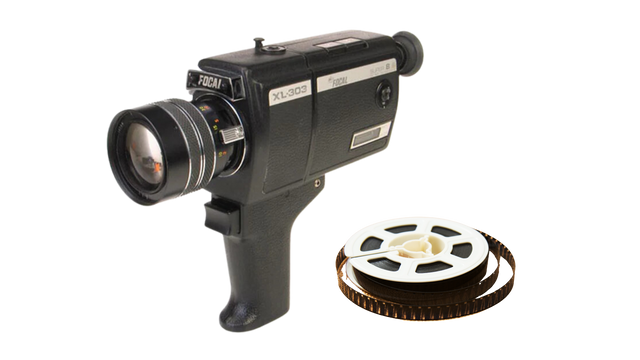If you’ve discovered a dusty box of old film reels tucked away in a closet or attic, you’re not alone. Many families hold priceless memories on 8mm and Super 8 film—but telling them apart can be tricky. This guide will help you identify which format you have, explain their key differences, and show you the best way to convert 8mm film to digital for safe, easy viewing.
Understanding 8mm vs Super 8
The difference between 8mm and Super 8 comes down to a few subtle—but important—details. Both formats were designed for home movies, but Super 8 was an upgraded version of the original 8mm format. Here’s how you can tell them apart:
-
Film Hole (Perforation) Size: 8mm film has larger, more widely spaced sprocket holes. Super 8 film has smaller holes, closer to the edge.
-
Frame Size: Super 8 has a slightly larger image area, resulting in better picture quality.
-
Cartridge vs. Reel: 8mm was often loaded onto open reels, while Super 8 could be loaded via convenient cartridges, especially in later cameras.
Not sure what you have? A professional film reel conversion service can help you make the right call—no guesswork required.

The History Behind 8mm and Super 8 Film Reels
Kodak introduced Standard 8mm film in the 1930s to make home movie recording more affordable. It used a 16mm roll that was split in half after exposure. Then in 1965, Super 8 came on the scene with easier loading, better image quality, and quieter cameras.
Both formats captured countless birthdays, vacations, and once-in-a-lifetime milestones. Unfortunately, neither format was built to last. Over time, film reels become brittle, warped, or affected by vinegar syndrome—a telltale sour smell that signals irreversible decay.
That’s why many families now look to America’s best film reel conversion service to preserve these fragile keepsakes before it’s too late.
Why You Should Convert 8mm Film to Digital
Even if your film looks “okay,” watching it requires a working reel to reel player, which are increasingly rare. And without regular maintenance, these machines can chew up your memories in a second. Worse, moldy film can forever destroy your memories.
Instead, a digital version:
- Preserves the footage in full quality (without further damage)
- Allows easy digital sharing with family members
- Eliminates the need for outdated projectors or film editors
You don’t need to worry about formatting either—today’s best services, like Heirloom, make it easy to convert 8mm film to digital, and even provide cloud access instead of DVDs, which often degrade or get misplaced.

FAQs: Common Questions About Movies on Film Reels
How do I store my old Super 8 or 8mm film reels safely?
Cool, dry, and dark places are best. Avoid attics or basements where humidity and heat speed up mold and deterioration.
Can I play Super 8 reels on an 8mm projector?
Not safely. Despite the name similarity, they’re not interchangeable. Using the wrong projector can damage the film.
What if I have a mix of films, photos, and tapes?
No worries. Heirloom preserves all media formats. You can send us a mix of everything for a free quote. See all our digitizing prices here.

📧 Want more tips like this?
Subscribe to Heirloom emails to learn how to preserve your priceless memories. Get discount codes for expedited shipping, quality digitizing, and secure cloud storage. We never spam, and it’s easy to unsubscribe at any time.


